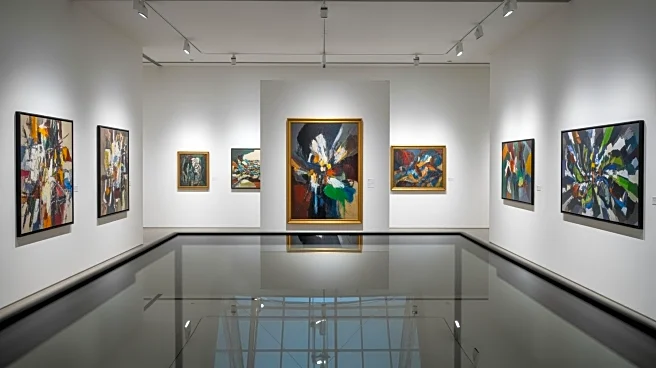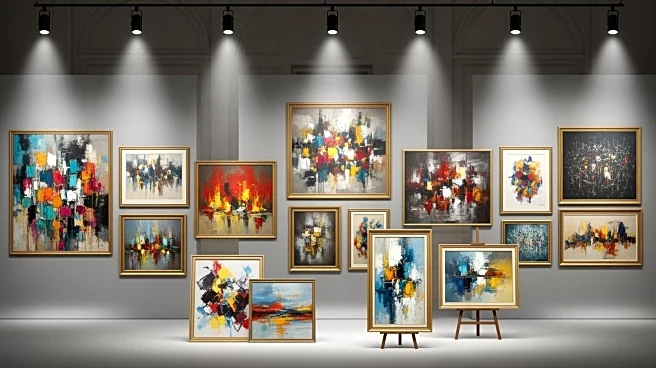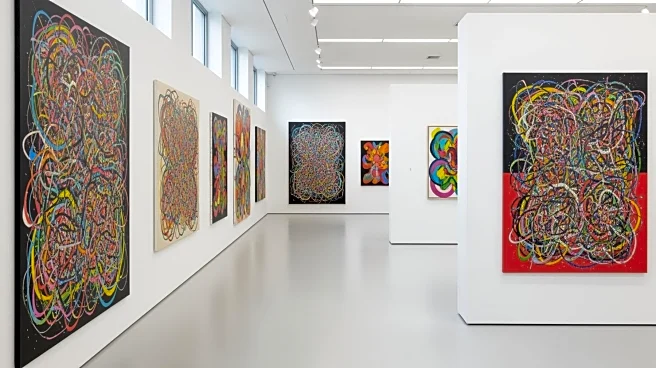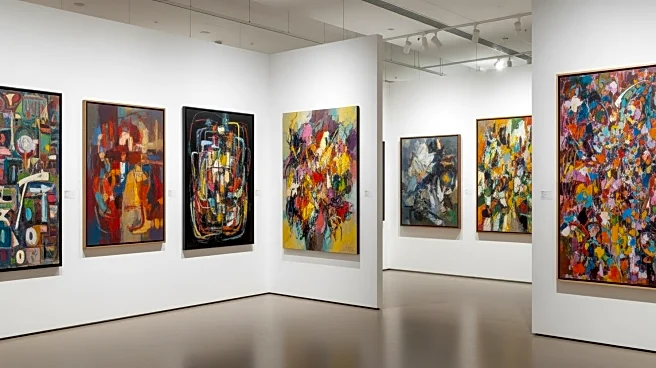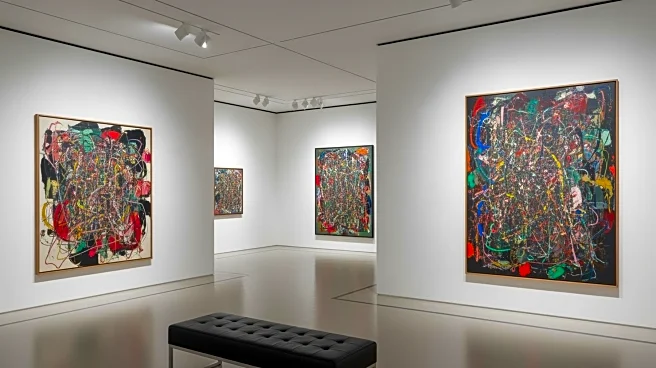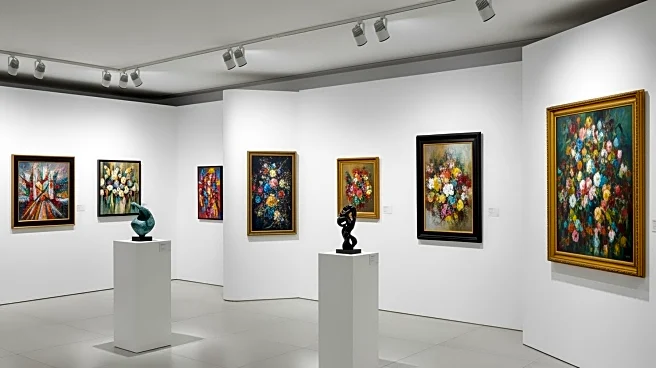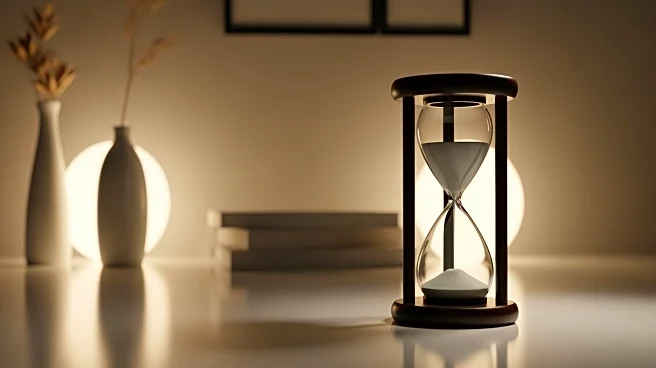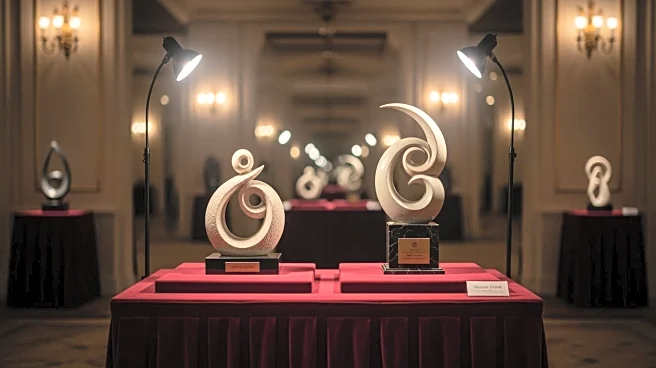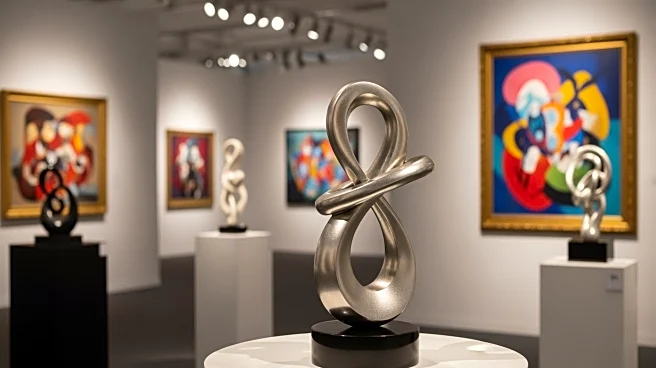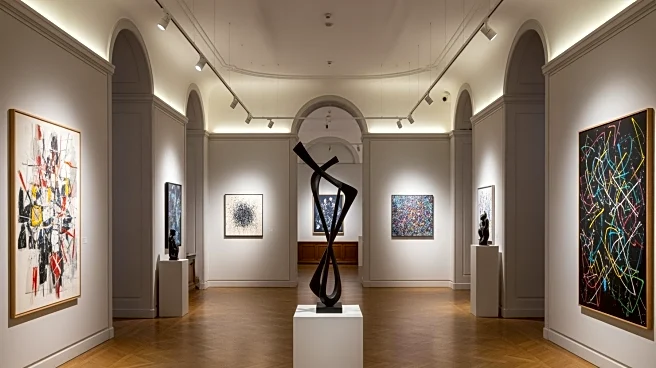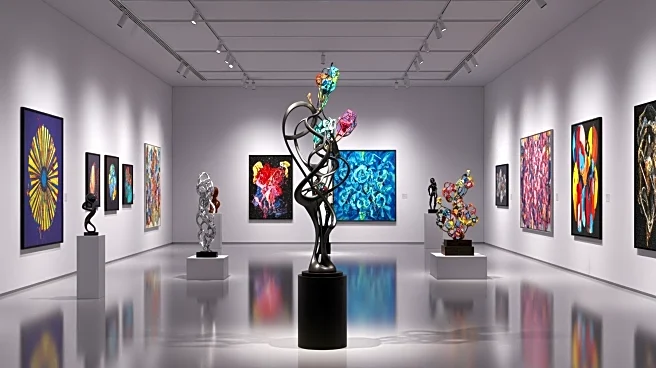What's Happening?
The Fondation Louis Vuitton in Paris is hosting a major retrospective of Gerhard Richter, showcasing 275 works from his extensive career. Curated by Dieter Schwarz and Nicholas Serota, the exhibition spans
Richter's early photographic paintings to his recent ink-cloud drawings. The retrospective is organized chronologically, highlighting the evolution of Richter's style and his engagement with German history. The exhibition aims to provide a comprehensive view of Richter's artistic journey, emphasizing his innovative techniques and historical awareness.
Why It's Important?
This retrospective is significant as it offers a deep dive into the career of Gerhard Richter, one of the most influential contemporary artists. By showcasing his diverse body of work, the exhibition highlights Richter's impact on modern art and his exploration of themes related to German history. The retrospective not only celebrates Richter's artistic achievements but also contributes to the broader discourse on the role of art in addressing historical and cultural narratives. It serves as a testament to Richter's enduring legacy and influence in the art world.
What's Next?
The exhibition is expected to attract art enthusiasts, scholars, and critics, sparking discussions on Richter's contributions to contemporary art. It may also inspire new interpretations of his work, influencing future exhibitions and academic studies. As the retrospective runs until March 2026, it provides ample opportunity for visitors to engage with Richter's art, potentially leading to increased interest in his work and further recognition of his impact on the art world.
Beyond the Headlines
Richter's retrospective not only showcases his artistic evolution but also underscores the ethical and cultural dimensions of his work. His engagement with German history, particularly through pieces like 'Uncle Rudi,' invites reflection on the role of art in confronting historical legacies. The exhibition highlights the complexity of Richter's approach, offering insights into how art can serve as a medium for historical and cultural dialogue.
